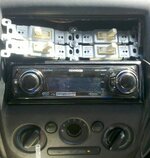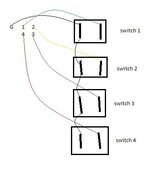For those who think this is a circuit board issue, why does the problem come and go? I started having issues with speed 2 about 1-1.5 years ago. Sometimes it would work, other times it didn't. About 6 mths ago it stopped working completely. Now speed 3 is doing the same thing, works sometimes, other times nada. Sometimes if I wiggle the control knob, it starts working. This seems like a connection issue more than a circuit board issue. Bad solder joints, bad contacts, etc.
So, I want to try the solder fix. I'm confused about how to pull the A/C knob panel out. I was able to get the dash panel off but I couldn't figure out how to disconnect the a/c knob panel. I cannot fit my hand behind the dashboard. Anyone have a step by step guide with pictures?
Thanks.
So, I want to try the solder fix. I'm confused about how to pull the A/C knob panel out. I was able to get the dash panel off but I couldn't figure out how to disconnect the a/c knob panel. I cannot fit my hand behind the dashboard. Anyone have a step by step guide with pictures?
Thanks.


